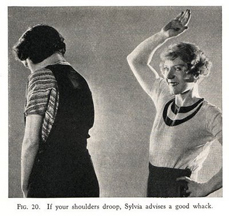Here are 10 things you should know about Marie Dressler was born—wait for it—152 years ago today. That she is still a prominent pop-cultural figure (at least among old-movie buffs) is a remarkable thing.
Tag: Marie Dressler
Happy 148th Birthday, Marie Dressler!
Beloved character actress and comedian Marie Dressler was born Leila Marie Koerber 148 years ago today in Cobourg, Ontario. Here are 10 MD Did-You-Knows:
- Dressler’s father was a music teacher and her mother a musician. When she was still a child, her family moved to the United States, residing in Michigan and Ohio. She grew appearing in amateur theatricals.
- At 14, Dressler left home, lying about her age that she might join a traveling stock company that played mostly in the Midwest. Her older sister, Bonita, also worked with the stock company for a time before leaving to get married. Much of Dressler’s early stage work was in light opera.
- Dressler made her Broadway debut in 1892 in Waldemar, the Robber of the Rhine, a production that enjoyed a brief five-week run. Dressler, who stood 5′ 7″ and weighed 200 pounds, had dreamed of being an operatic diva or a tragedienne, but the author of Waldemar, Maurice Barrymore, father to Lionel, John and Ethel, convinced her that comedic roles would suit her best.
- Dressler’s first starring role came in 1896 in The Lady Slaver, which played for two years at the Casino Theatre.
- Throughout the 1900s and ’10, Dressler kept busy in Broadway productions and in vaudeville, and during World War I, she toured the country, selling Liberty bonds and entertaining the troops.
- Aside from cameo roles playing herself in a pair of film shorts, Dressler’s movie debut came in 1914 at age 44 when fellow Canadian Mack Sennett hired her to star opposite Charlie Chaplin (in a villainous, non-Tramp role) in Tillie’s Punctured Romance, one of the first full-length, six-reel motion picture comedies. The movie was a hit, and Dressler continued to enjoy success in film comedies into the 1920s.
- Her movie career on the wane in the late ’20s, Dressler, now in her late 50s, was considering taking a position as a housekeeper on Long Island—another story has it that she was on the verge of committing suicide—when screenwriter Frances Marion convinced MGM to cast her in The Callahans and the Murphys (1927). That hit picture revived her career.
- Dressler won the Best Actress Oscar for Min and Bill (1930), the first of three popular pictures she would make with Wallace Beery. Only the fourth actress to win that award, she was the third Canadian in a role to do so (after Mary Pickford and Norma Shearer). She received the award the day after her 63rd birthday.
- At age 65, Dressler was named the top box-office draw of 1933 by the Motion Picture Herald.
- The house Dressler was born in Cobourg still stands. Known today as the Marie Dressler House, it was a restaurant from 1937 through 1989, when it was damaged by fire. After being restored, it served as the office for the Cobourg Chamber of Commerce for a time until it was transoformed into a Marie Dressler museum and information center for tourists visiting Cobourg.
Happy birthday, Marie Dressler, wherever you may be!

Happy 107th Birthday, Ruby Keeler!
Actress, singer and dancer Ruby Keeler was born Ethel Ruby Keeler 107 years ago in Dartmouth, Nova Scotia. Here are 10 RK Did-You-Knows:
- Her father was a truck driver who moved his wife and six kids to New York City when Ruby was three years old in search of better pay.
- Ruby’s family couldn’t afford dance classes for the aspiring hoofer, but she took occasional lessons at the parochial school she attended.
- When she was 13, Keeler lied about her age (the law required chorus girls be at least 16) and attended a cattle call audition for a Broadway producer. She was hired for the chorus in George M. Cohan‘s The Rise of Rosie O’Reilly (1923). A year later, she was working in the chorus at a Tex Guinan speakeasy called El Fay.
- After appearing in a few more Broadway shows, Keeler married Al Jolson and moved west to Hollywood with him. Though the marriage lasted eleven years, it was not a happy one and Keeler was hesitant to discuss it in later years. When a biopic was made about Jolson’s life in 1946, Keeler refused permission to use her name in the movie.
- Her first credited movie role was in 42nd Street (1933), in which she played a young Broadway chorus girl who gets her big break with the star of the show breaks a leg (literally).
- Keeler’s greatest success in pictures came in a string of Busby Berkeley musicals in which she starred opposite boyish crooner Dick Powell.
- Keeler retired from show business in the 1940s, but made a triumphant return to the Broadway stage in 1971 in a revival of the play No, No, Nanette. The production ran for 861 performances.
- Keeler was one of several Canadian actresses who were stars in Hollywood in the 1920s and 1930s, including Mary Pickford, Marie Dressler and Norma Shearer.
- Keeler’s movie career was brief; she starred in just eleven feature-length motion pictures from 1933 to 1941. She later made the occasional cameo appearance in movies and on television, but these were few and far between.
- Keeler’s nephew was Ken Weatherwax, who played Pugsley on the 1960s sitcom The Addams Family.

Happy 114th Birthday, Norma Shearer!
There seems to be widespread confusion regarding Norma Shearer’s birthday. Some sources say she was born on August 10, some say August 11, and The New York Times, in its obituary for her, cites August 15. The year is in question too: Was she born in 1900, 1902 or 1904? Biography.com lists her birth as occurring in 1900 and 1902.
We’re going with August 10, 1900, but we cannot promise that’s correct….
Norma Shearer was born Edith Norma Shearer 114 years ago today in Montréal, Québec, Canada. Here are 10 Did-You-Knows about the former Queen of MGM:
- Shearer, who won a beauty contest at 14, moved to NYC with her (stage) mother and sister Athole (who would later marry legendary director Howard Hawks) four years later. After Florenz Ziegfeld passed on casting Shearer in his Follies, she got some small roles in movies.
- Irving Thalberg saw some of her early movie work and in 1923 signed Shearer to a contract with with Louis B. Mayer Pictures, a precursor of MGM, where he was vice-president.
- Shearer made eight—count ’em, 8!—feature pictures in 1924.
- Shearer converted to Judaism to marry Thalberg in 1927 and continued to observe the faith after his death and for the rest of her life.
- Norma’s brother, Douglas, won twelve Academy Awards for his work as a sound designer. The pair were the first brother-and-sister tandem to win Oscars.
- At a point in her career when she appeared in only prestige productions, she played a part in The Stolen Jools (1931), a star-studded short subject intended to raise money for a tuberculosis sanatorium, as the owner of the titular “jools.” Also in the film were such luminaries as Wallace Beery, Buster Keaton, Edward G. Robinson, Laurel and Hardy, and members of the Our Gang cast.
- F. Scott Fitzgerald is said to have based one of his stories, “Crazy Sunday,” on one of Shearer’s parties and the story’s protagonist, Stella Calman, on Shearer herself.
- Weak eye muscles gave Shearer a slightly crossed eye; she worked with eye doctors to improve it and cameramen to disguise it.
- She was the third woman to win the Best Actress Oscar and the second of three consecutive Canadians to win it (Mary Pickford won it in 1929 and Marie Dressler in 1931).
- Among the roles she is reported to have turned down were Scarlett O’Hara (Gone with the Wind), Mrs. Miniver, and Norma Desmond (Sunset Boulevard). Of Scarlett, she said, “Scarlett O’Hara is going to be a thankless and difficult role. The part I’d like to play is Rhett Butler.”
Happy birthday, Norma Shearer, wherever you may be!

Hollywood Undressed, Part Two
DIET AND WHOLESOME COOKING

